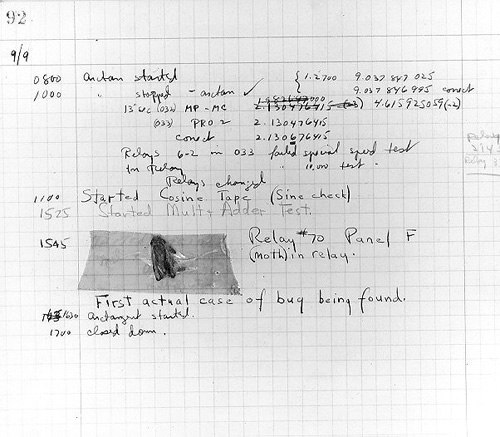No matter how complex or simple a defect is, the term “Bug” is being used to describe defects from decades. But there is a very interesting story behind the origin of this terminology.
So the legend goes like this:
” In the late 1940’s, a large supercomputer was being built in the Harvard University Computer Science Laboratory under the code name Harvard Mark II. It was a huge electromechanical computer built up of a large number of relays and electromechanical switches. The project was funded by the US Navy and was capable of performing really complex mathematical computation’s like logarithm, exponential, reciprocal, square root all of which placed it way ahead of its time.
It was performing explicably until an error was discovered in its output. After hours of analysis, it was found out that the root cause of the error was a silk moth trapped in one of the relays thereby causing a short circuit and inducing an error in the output.
Grace Murray Hopper, a computer scientist who was working on Mark II discovered the first ever found computer bug. She glued the bug in a text book with the help of a tape as shown below:
This first very bug is still preserved in the National Museum of American history of the Smithsonian Institution.
Henceforth, the term “Bug” is being used to describe any defect in computers and “Debugging” is used to describe a phase when the computer is not working and the bug is being identified.
Key Details:
- Supercomputer Code name : Harvard Mark II Aiken Relay Calculator
- First bug was found on : 9th September, 1947
- Place of Discovery : Harvard University
- Scientist who Discovered : Grace Murray Hopper
